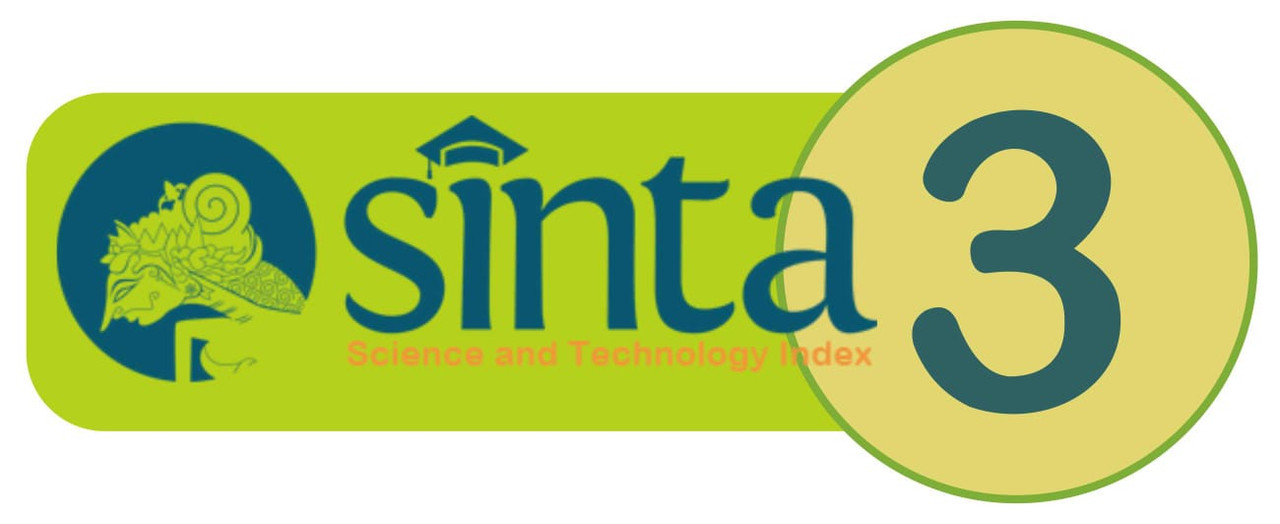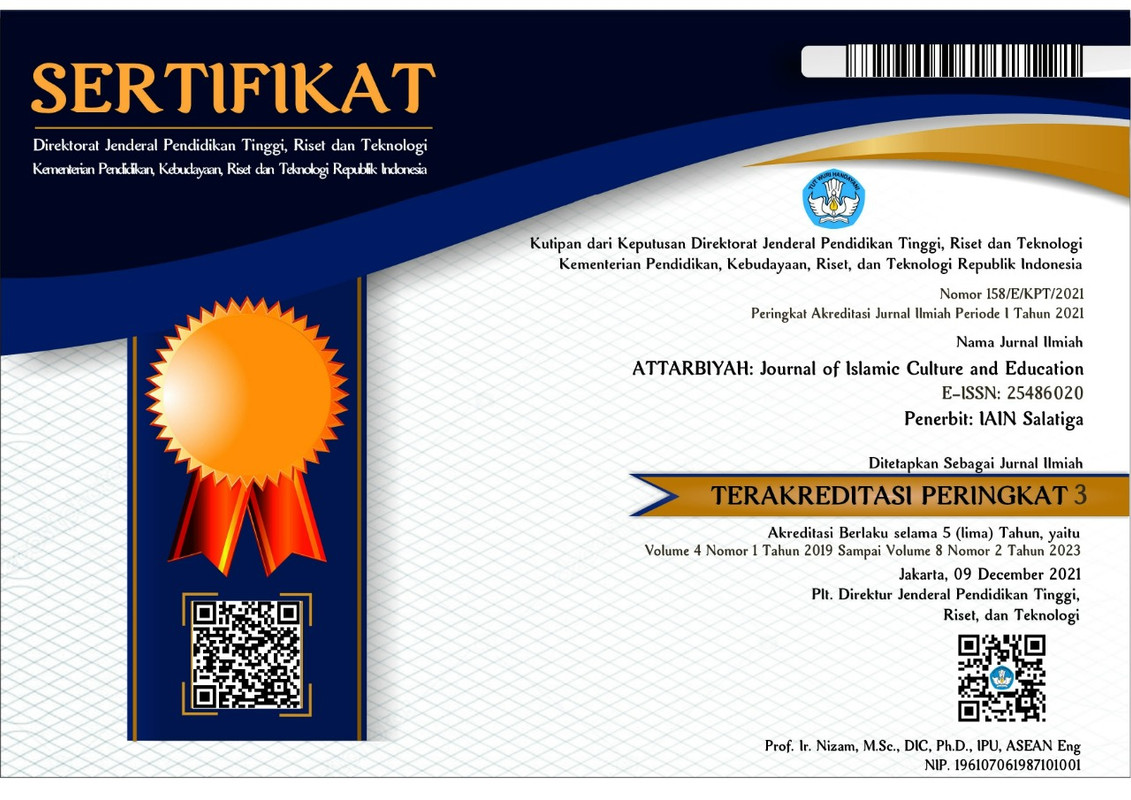The concept of sex education for children and adolescents in Quranic perspective (comparative study of Abdullah Nashih Ulwan and Muhammad Quraish Shihab)
DOI:
https://doi.org/10.18326/attarbiyah.v9i1.91-108Kata Kunci:
Sexuality, Education, Nashih Ulwan, Quraish ShihabAbstrak
The purpose of this study is to conduct a comparative analysis between the views of Abdullah Nashih Ulwan and Muhammad Quraish Shihab on the concept of sex education for children and adolescents. This research uses a qualitative approach of library research type. The main data source is the book Tarbiyatul Aulad by Abdullah Nashih Ulwan and Sexuality and Interaction; Education from the Perspective of the Quran and Sunnah by Muhammad Quraish Shihab. The results showed that according to Abdullah Nashih Ulwan, sexuality education is categorized into four stages: tamyiz (7-10 years), murohaqoh (10-14 years), puberty (14-16 years), and post-baligh. Meanwhile, Muhammad Quraish Shihab emphasizes the importance of providing sex education as early as possible by explaining the differences in human sex and appreciating the discussion of sexuality. Muhammad Quraish Shihab divides three phases of sexual education. First, pre-baligh I (toddler phase/0-5 years). Second, pre-baligh II (child phase/6-11 years). Third, the baligh phase (adolescence/12-25 years). Finally, the post-baligh phase. This research contributes theoretically about the concept of sex education for children and adolescents.
Referensi
Adam, G. (2019). Pendidikan Seks Bagi Anak Usia Dini di Desa Satar Lenda, Kecamatan Satar Mese Barat, Kabupaten Manggarai. Randang Tana - Jurnal Pengabdian Masyarakat, 2(1), 71–78. https://doi.org/10.36928/jrt.v2i1.284.
Atabik, A., & Burhanuddin, A. (2015). Nashih Ulwan's Concept of Children's Education. Elementary Journal, 3(2), 11–15. http://dx.doi.org/10.21043/Elementary.v3i2.1454.
Dariyo. (2004). Psychology of Adolescent Development. Bogor: Ghalia Indonesia Publishers.
Haryanti, D., & Romli. (2021). Islamic Education in the Family Perspective of Abdullah Nashih Ulwan. EDUGAMA: Journal of Education and Social Religion, 7(2), 16–22. https://doi.org/https://doi.org/10.32923/edugama.v7i2.2030.
Irmayanti, N., & Zuroida, A. (2019). Development of a Knowledge Model of Sexual Behavior Through Sex Education for High School Students. Journal of Urban Sociology, 2(1), 5–9. http://dx.doi.org/10.30742/jus.v2i1.612
Izzaty, R. (2013). Student Development. Yogyakarta: UNY PRESS.
Kurnia, N., & Tjandra, E. (2012). Mother, What is Sex? Smart and Wise Ways to Explain Sex to Children. Jakarta: PT. Gramedia Pustaka Utama.
Madani, Y. (2003). Sex Education for Children in Islam: A Guide for Parents, Teachers, Ulama, and Other Groups , Trans. From At-Tarbiyyah Al-Jinsiyyah Lil Athfal wa Al-Balighin by Irwan Kurniawan, Cet. 1.Jakarta: Zahra Library.
Mulia, S. M. (2015). Exploring Sexuality: Understanding the Meaning, Function and Problems of Human Sexuality in Our Era. Jakarta: Opus Press.
Quthb, S. (2003). Tafsir Fi Zilalil Quran (Di Bawah Naungan al-Quran : Surah at-Taubah 93 – Yusuf 101) (Jilid 6). Jakarta: Gema Insani.
Ratnasari, R. F., & Alias, M. (2016). Pentingnya Pendidikan Seks untuk Anak Usia Dini. Tarbawi Khatulistiwa: Jurnal Pendidikan Islam, 2(2), 55–59. https://doi.org/10.29406/tbw.v2i2.251.
Ristianto, C., & Asril, S. (2018). KPAI Sebut 525 Kasus Pornografi dan Kejahatan Siber Libatkan Anak-anak. Retrieved from https://nasional.kompas.com/read/2018/11/09/22403551/kpai-sebut-525-kasus-pornografi-dan-kejahatan-siber-libatkan-anak-anak.
Sarwono. (2006). The Psychology of Adolescent. Jakarta: PT. Raja Grafindo Persada.
Shihab, M. Q. (2023). Sexuality and Interaction; Education from the Perspective of the Koran and Sunnah. Jakarta: Lentera Hati.
Susanti. (2020). Perceptions and Methods of Providing Sexual Education to Kindergarten Children, Indramayu: Adab Publishers. Indramayu: Adab Publishers.
Suyadi. (2011). Early Childhood Education Management. Yogyakarta: Student Library Publisher.
Syarifuddin, N., & Fauzi, M. (2019). Pendidikan Karakter Perspektif Abdullah Nashih Ulwan (Tinjauan Kitab Tarbiyatul Aulad Fil Islam dan Relevansinya dengan Pendidikan Nasional). Akademika: Jurnal Studi Islam, 13(02), 153–163.https://doi.org/10.30736/adk.v13i02.124.
Ulwan, A. N. (2020). Children's Education in Islam, Trans. From Tarbiyatul Aulad Fil Islam by Arif Rahman Hakim, Cet. 12. Solo: Insan Kamil.
Waller, B. N. (2012). Critical Thinking Consider the Verdict. Youngstwon State University, United States Of America: Pearson Education.
Zed, M. (2004). Library Research Methodology. Jakarta: Indonesian Obor Foundation
Unduhan
Diterbitkan
Cara Mengutip
Terbitan
Bagian
Lisensi
Hak Cipta (c) 2024 Ina Salmah Febriani, Asri Karolina, Siti Shofwatul Millah

Artikel ini berlisensiCreative Commons Attribution-ShareAlike 4.0 International License.







